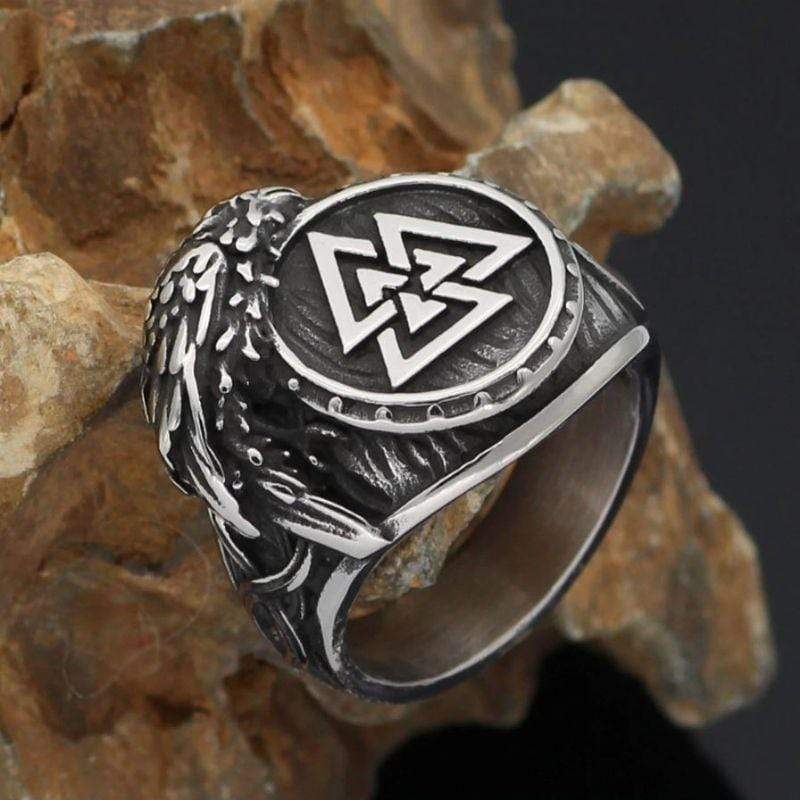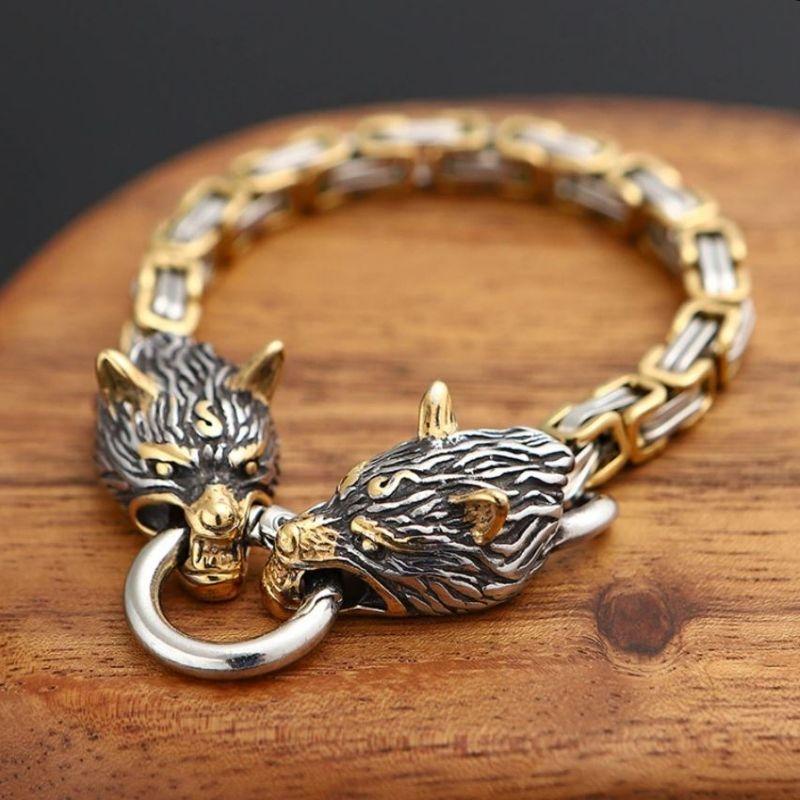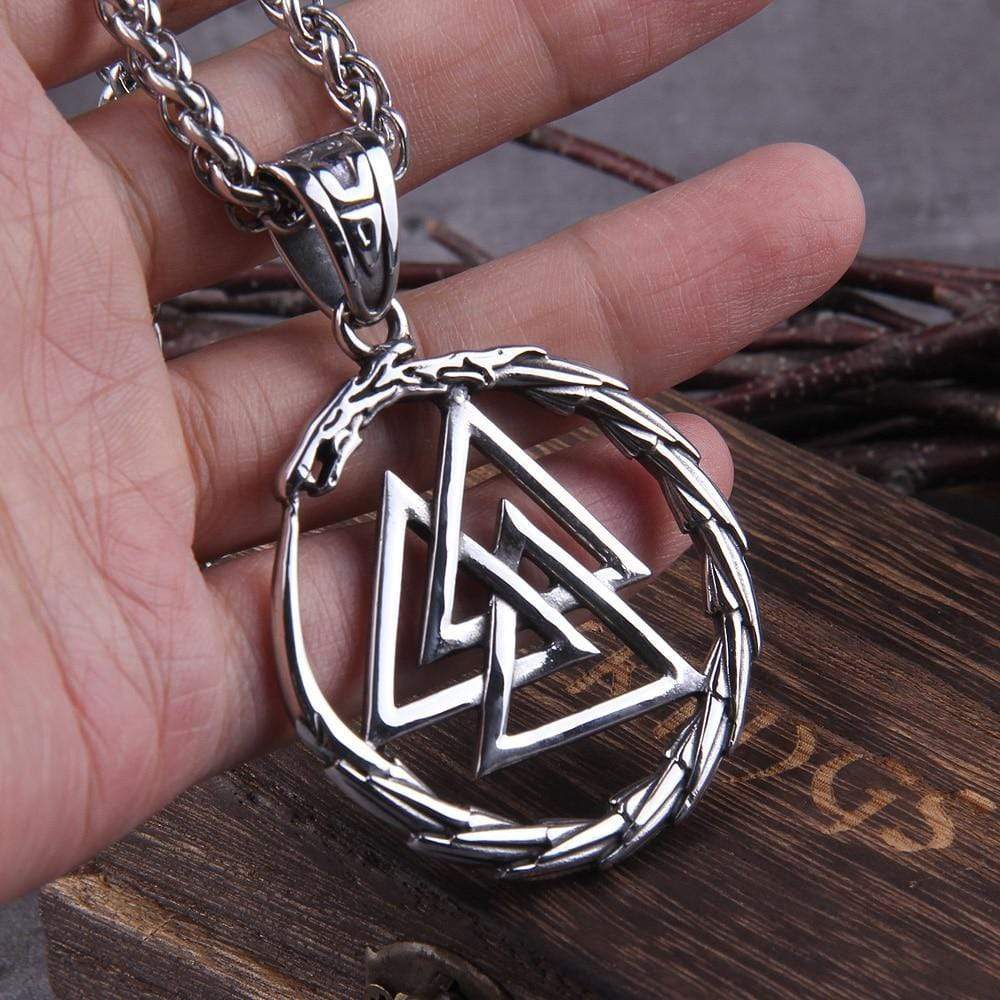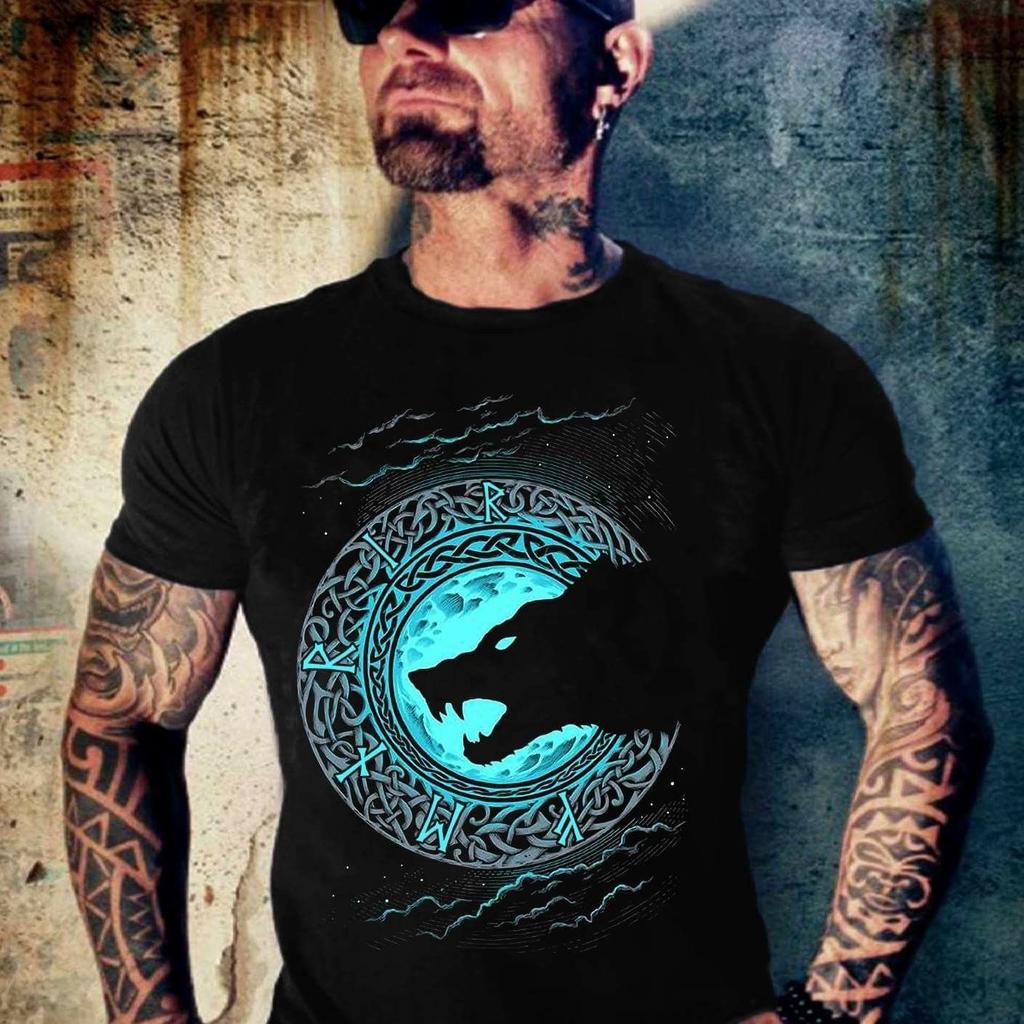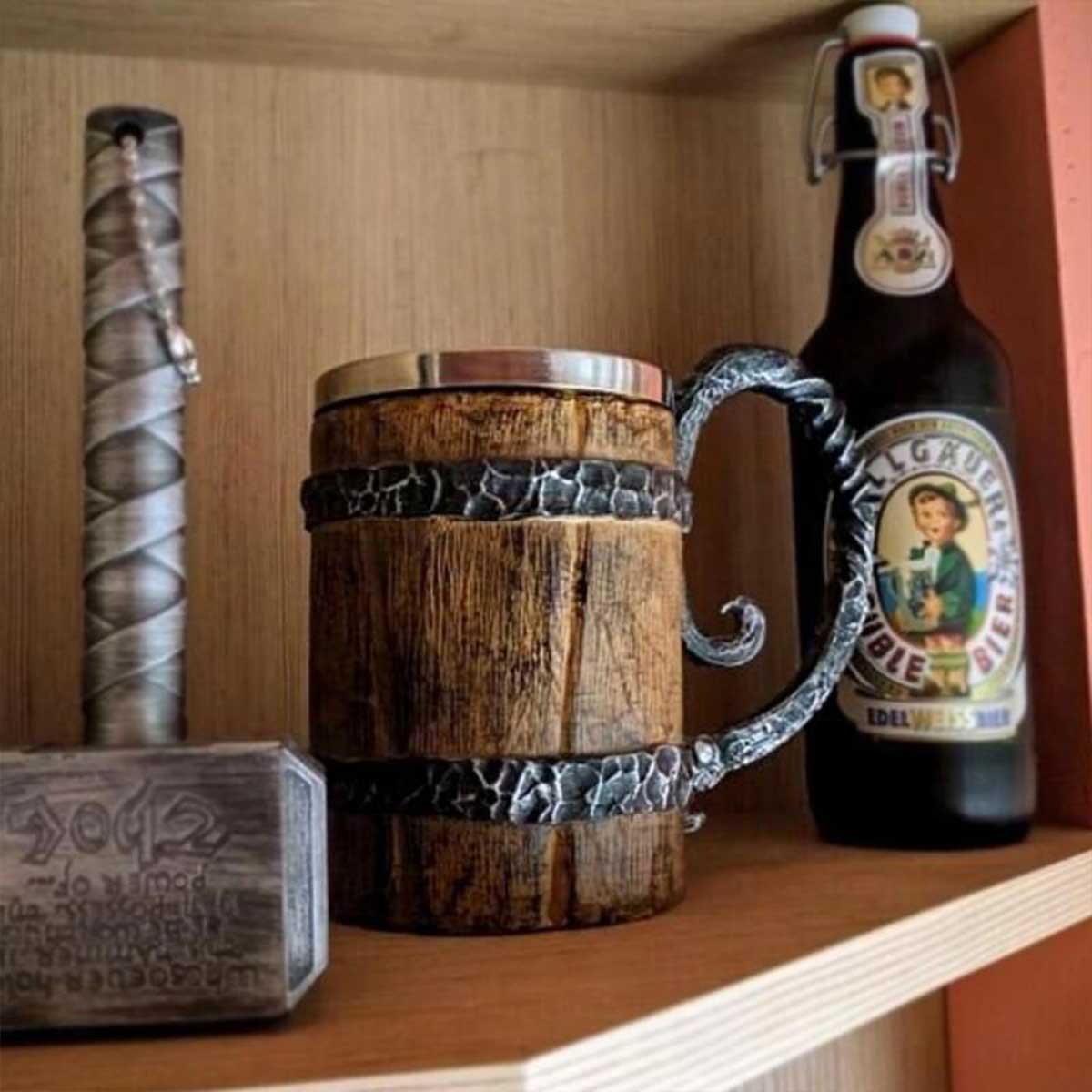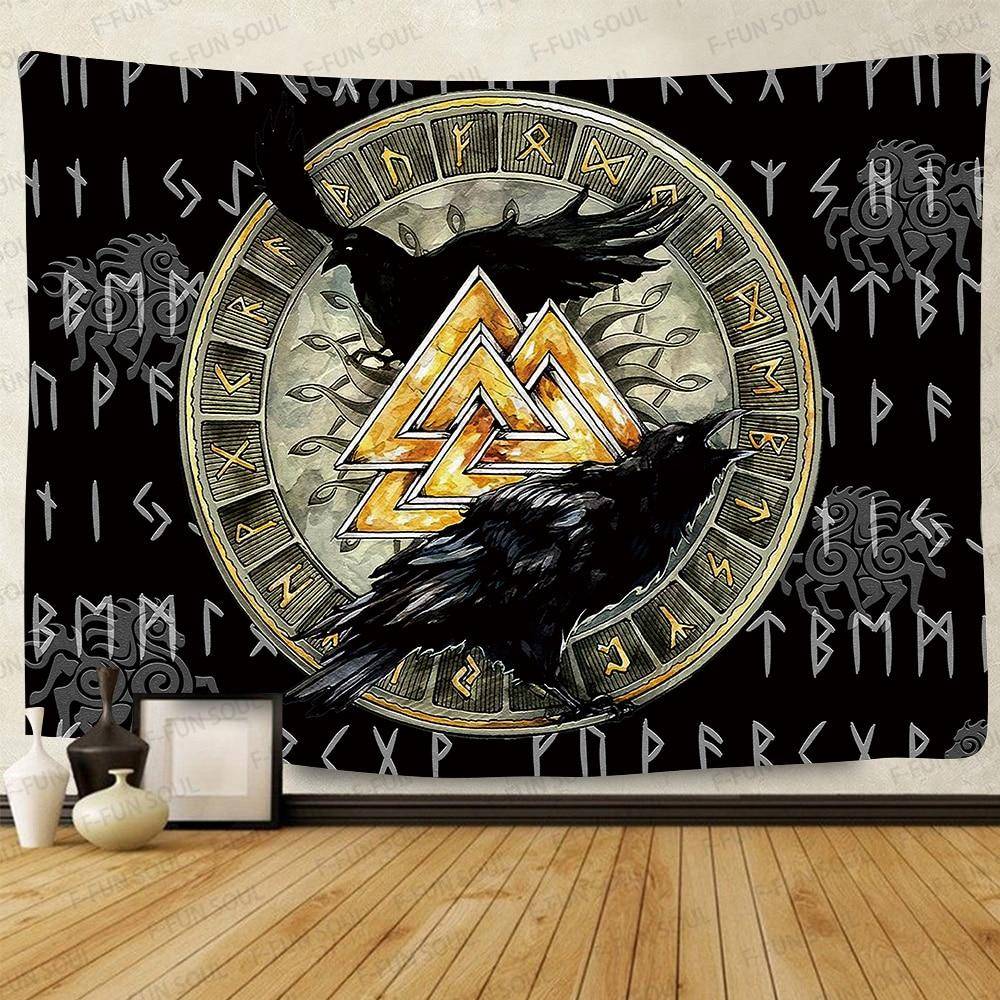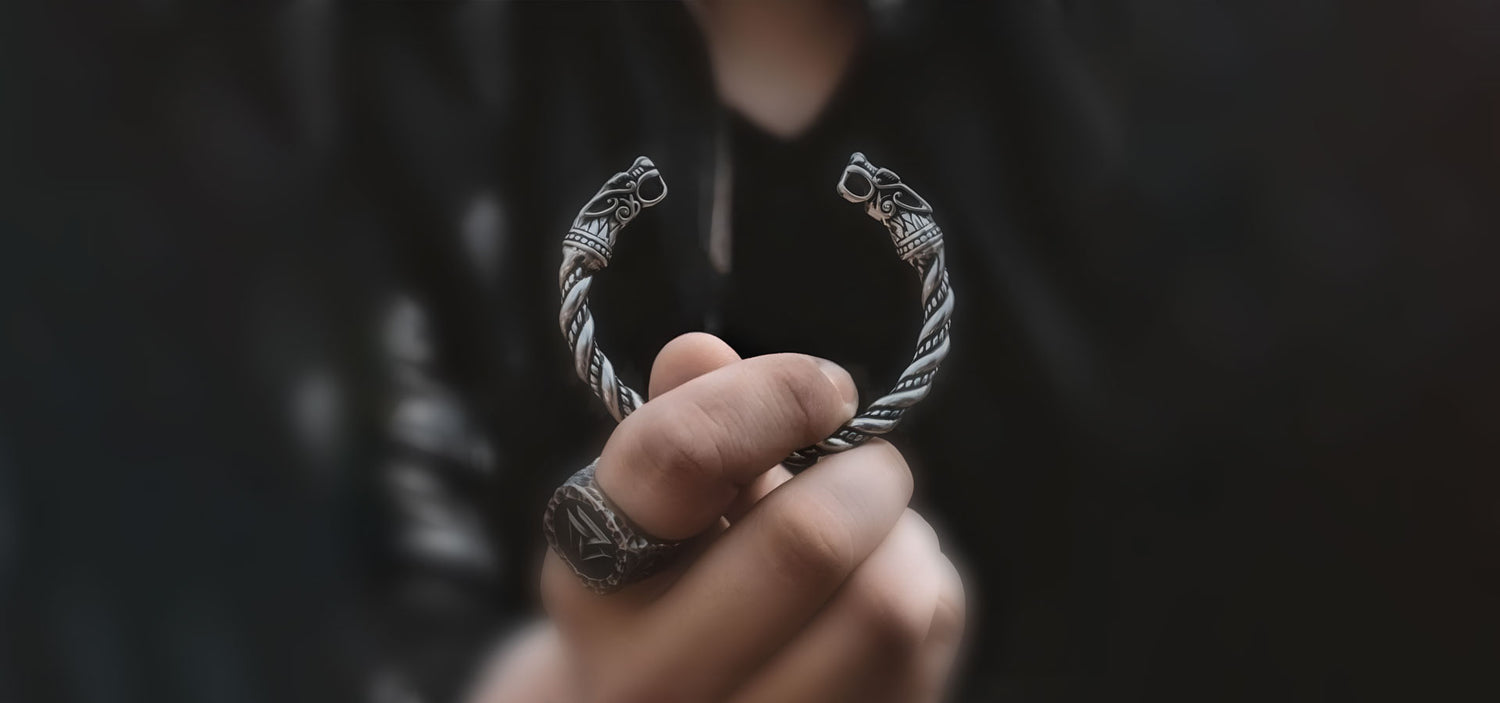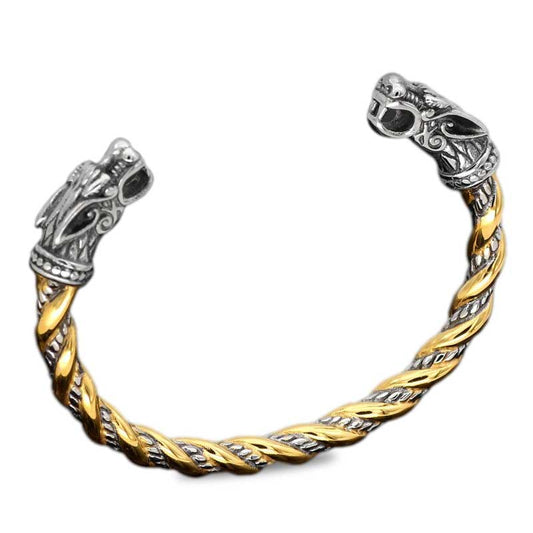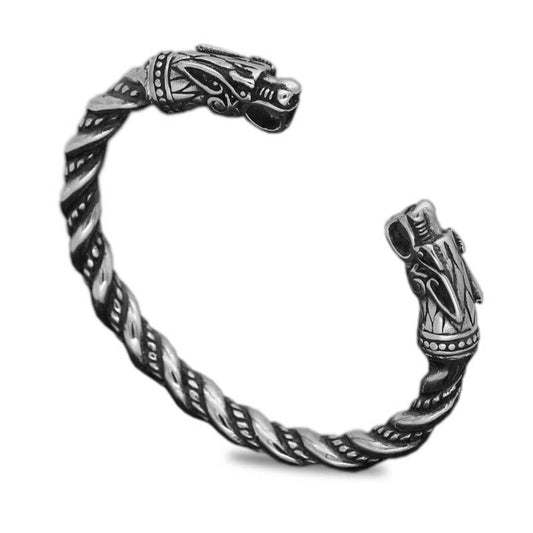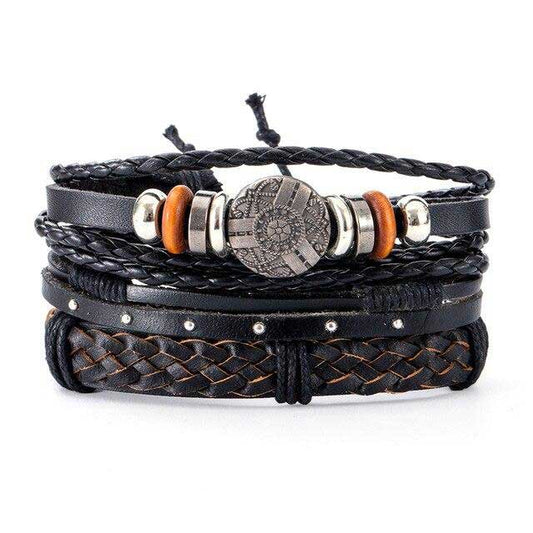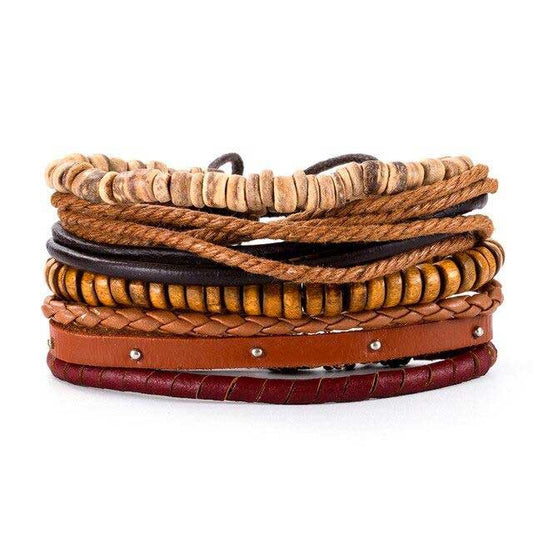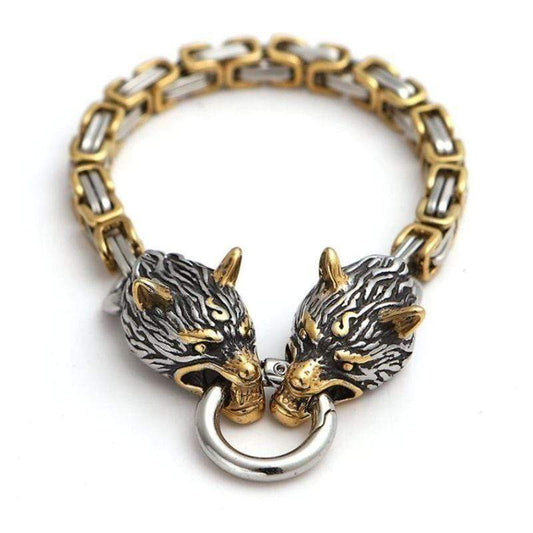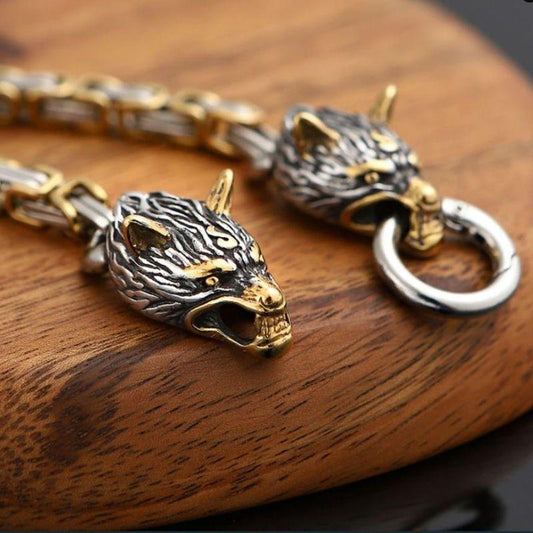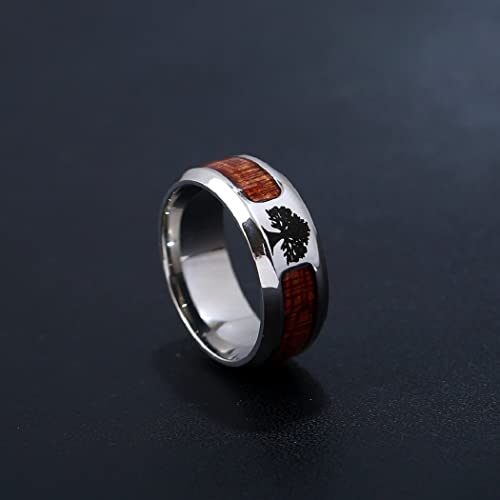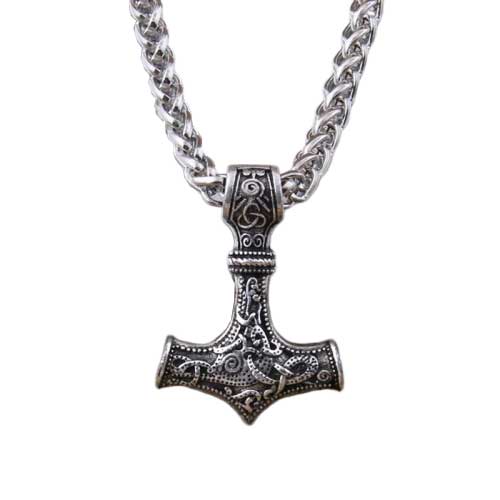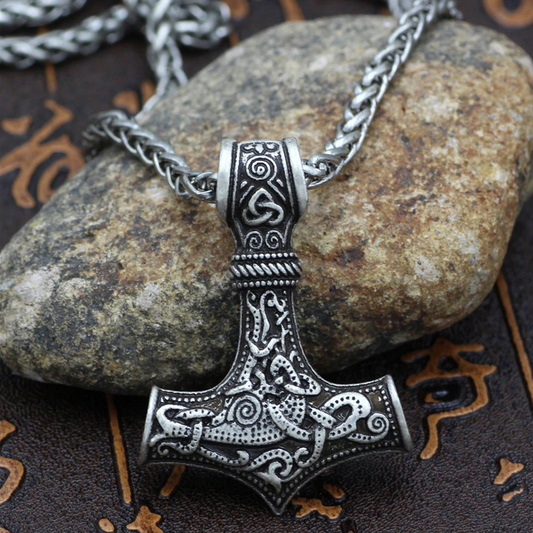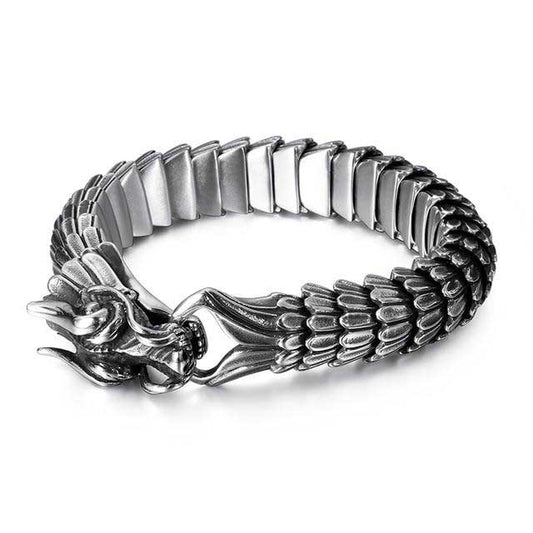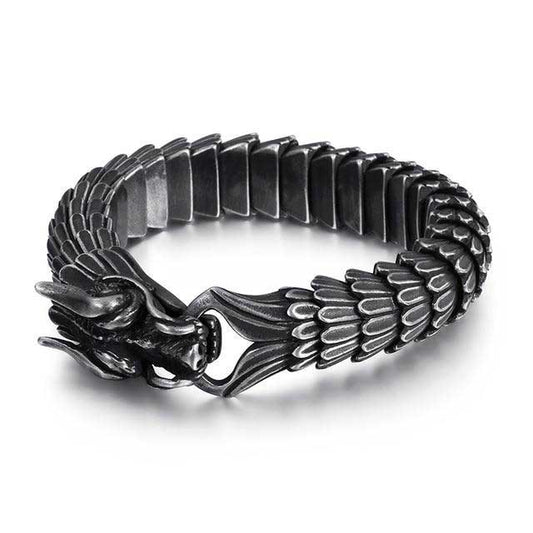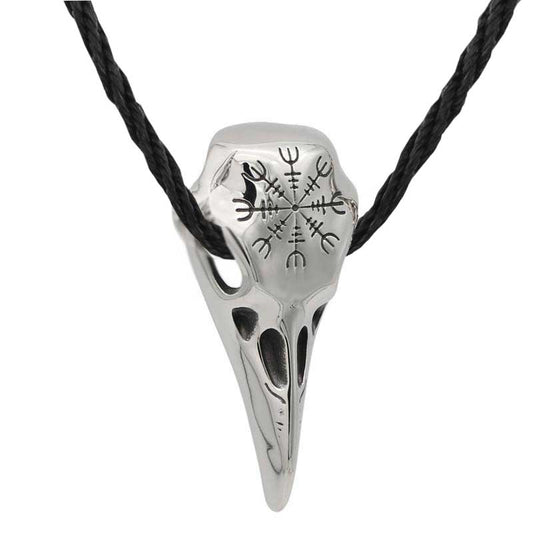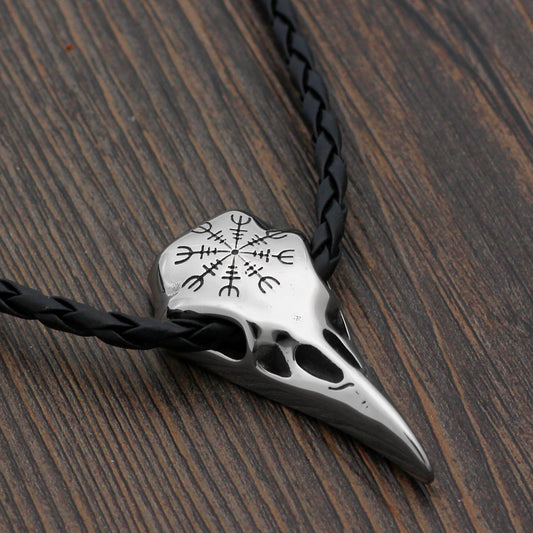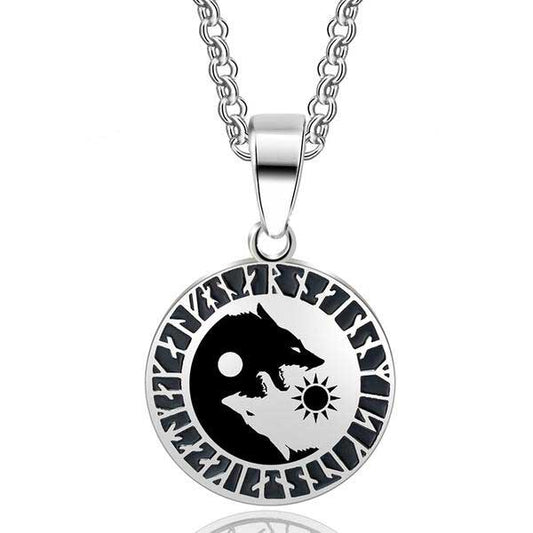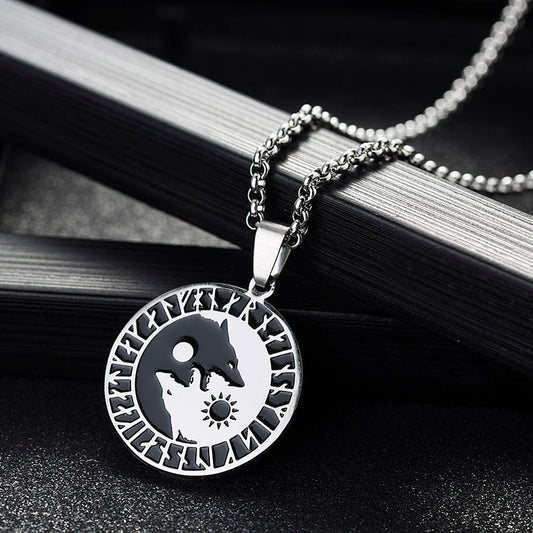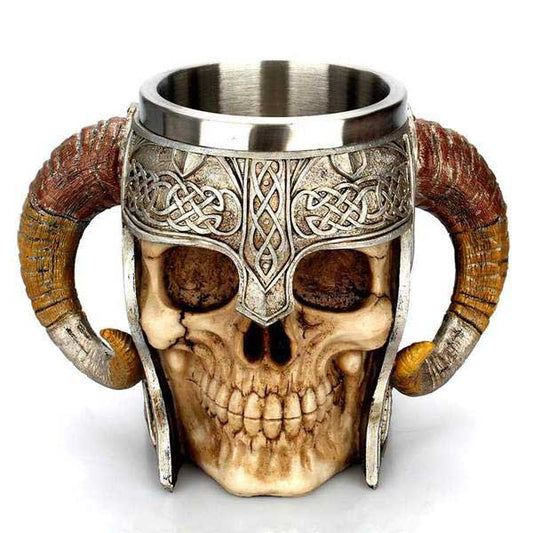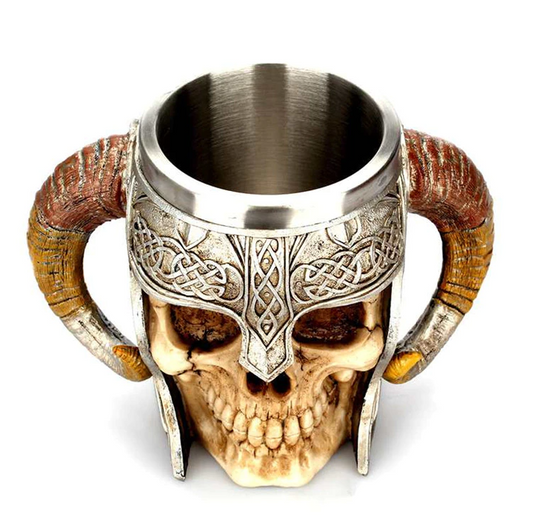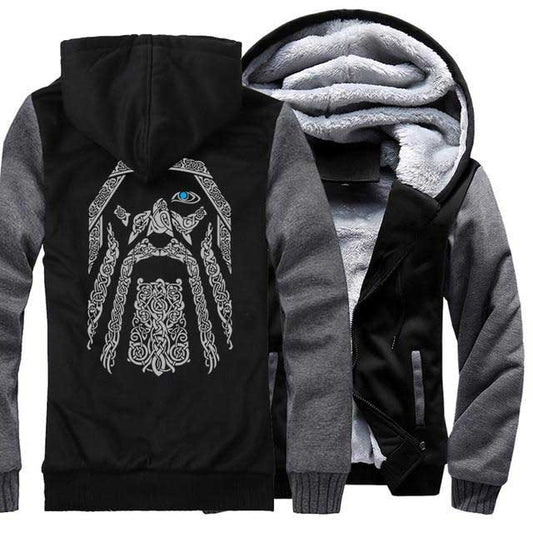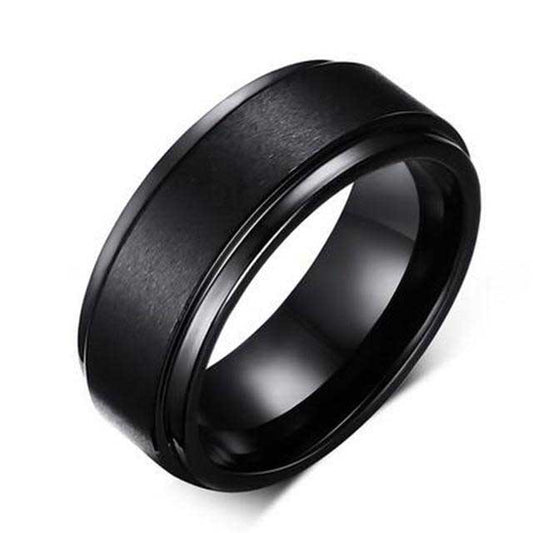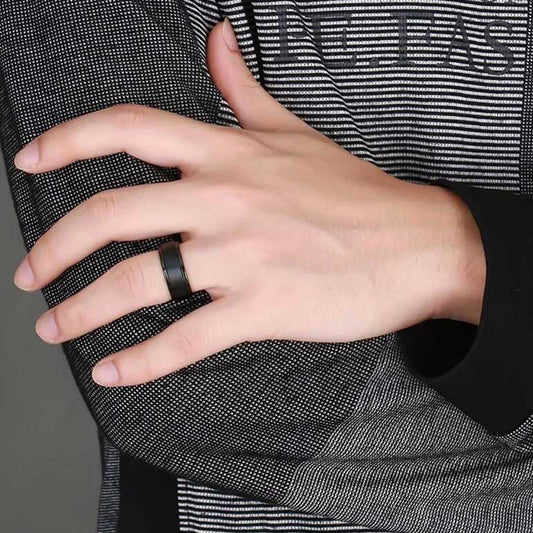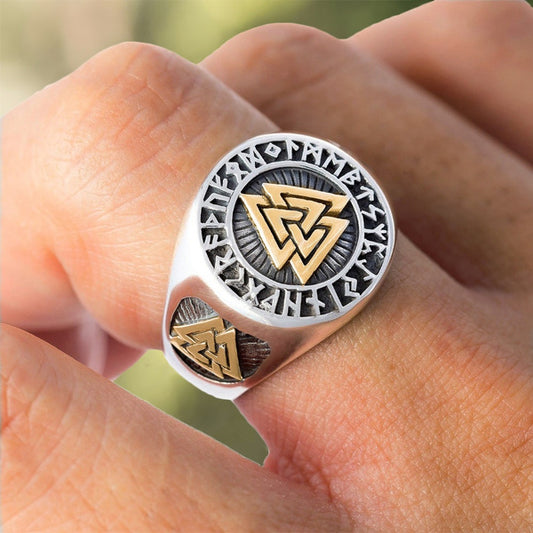Here are the best places for a Viking tattoo and what to consider:
- Arms and Shoulders : Perfect for symbols of strength like Thor's hammer
- Torso : Great for large designs like Yggdrasil
- Forearm : Good choice for runes or small symbols
- Back : Allows for large mythological scenes
- Legs : Increasingly popular for vertical designs
Things to keep in mind:
- Location influences the appearance and lifespan of the tattoo
- Think about your lifestyle and desired visibility
- Pain and healing vary depending on the area of the body
- Always discuss with your tattoo artist to find the best spot
The key is to choose a location that speaks to you and highlights the meaning of your Viking tattoo.
Related YouTube video
Best Places for a Viking Tattoo
Choosing where to place your Viking tattoo is crucial. Certain areas of the body really showcase these historically-charged symbols.
Ideal areas for meaning
The arms, shoulders and torso are perfect for Viking symbols, especially those related to war and protection.
The upper arm is great for detailed designs like Odin's Raven or the Valknut . You have room for intricate patterns and it's easy to see.
Shoulders? Perfect for symbols of strength like Thor's hammer.
The Odins-Glory website says:
"Getting your Viking tattoo isn't just for looks. It's about creating a strong connection between the symbol and your story."
And the torso, especially above the heart, is great for tattoos that mean something deep. The Helm of Awe , a symbol of protection and power, naturally finds its place there.
Most visible areas
Want to proudly show off your Viking side? There are places just made for that.
Forearms are great for runes or small Viking symbols. It's a good choice for beginners, it hurts less.
The back? It's like a big canvas for complex mythological scenes. Perfect for a big Yggdrasil or an epic battle between gods and giants.
Legs, especially calves, are becoming more and more popular. You can make cool vertical designs on them, such as a runic sword or a Nordic dragon.
Remember, the location you choose will influence how your tattoo looks and how long it will last. Jennifer Schloth, a board-certified dermatologist, explains:
“Areas of the body with thicker skin, or areas where you move a lot, tend to fade.”
So think about your lifestyle when choosing the location.
Ultimately, the best place for your Viking tattoo is the one that speaks to you the most. Whether it’s a small symbol on your wrist or a large mural on your back, the important thing is that your tattoo tells YOUR story while honoring Viking heritage.
How Location on the Body Influences Design
Choosing the placement of your Viking tattoo is crucial. It affects the final look and experience of the tattoo. Here's what you need to know:
Space and details
Each body part offers a unique "canvas" for your Viking tattoo:
Back or chest? Perfect for intricate designs. Imagine a detailed mythological scene or a large Yggdrasil spread across your skin.
Wrists or ankles? Ideal for compact symbols. A rune or a small Valknut will fit perfectly there.
Experienced tattoo artist Sydney Smith sheds some light:
"The ribs? A challenge. You're working almost on the bone, without much muscle to cushion it."
So, think carefully about the size and complexity of your Viking design before choosing the location.
Pain and healing
The pain? It varies A LOT depending on the areas of the body:
Arms, thighs, calves: less painful. More fat and muscle = more bearable experience.
Neck, ribs, feet: more sensitive. Thin skin and many nerves = ouch!
Renowned tattoo artist Dillon Forte adds:
"The neck? A sensitive area. Lots of nerve endings and muscles."
And healing? It also depends on the location. Joints that move a lot can take longer to heal.
Any advice for your first Viking tattoo? Start with a less sensitive area. This will help you gauge your pain tolerance.
Remember: the final choice is yours. The ideal placement is the one that suits YOU best, for the design and your comfort. Always discuss with your tattoo artist the options that fit your vision and physiology.
sbb-itb-2713a32
Where to place the different Viking symbols
Choosing the right place for your Viking tattoo is essential. Each symbol has its own meaning and certain parts of the body highlight them better. Here are some ideas for placing your Viking symbols carefully.
Runes: where to position them?
Runes are powerful symbols in Norse culture. Their placement deserves some thought:
The forearm is perfect for single runes or short combinations. It is visible and offers enough space for details. The wrist is suitable for a single rune or a small rune strip - discreet but meaningful. For long inscriptions or complex combinations, the back offers a large canvas.
Pay attention to the orientation of the runes! Make sure they are in the right direction to keep their meaning. The Gebo (ᚷ) rune is a good choice because it is identical upside down and upside down.
"Each rune is complex. Their influence can change depending on their position and the energy associated with them." - Expert in Nordic traditions
Animals and stories: what space should we give them?
Animal symbols and mythological scenes often need more space:
The torso is ideal for large designs like Yggdrasil or an epic battle scene. The shoulder blade is perfect for a flying Odin's raven or a Fenrir wolf. For a compact animal symbol like the serpent Jörmungandr, the bicep is a good choice.
Imagine a striking tattoo: Huginn or Muninn, Odin's ravens, flying in front of a Valknut against a forest backdrop. This design symbolizes the connection between the spiritual and earthly worlds - perfect for the upper back or chest.
"In Viking culture, ravens are not just birds. They are powerful symbols of intuition and prophecy." - The Wicked Griffin
Before getting a rune tattoo, take some time to think about its meaning. Connect with its energy. Your tattoo will be more personal and meaningful.
Remember: the best place is the one that speaks to you. Always discuss with your tattoo artist to find the ideal spot that will highlight your Viking symbol while respecting the anatomy of your body.
Tips for choosing a location
Choosing where to place your Viking tattoo isn't just a matter of style. It's also about your daily life and comfort. Here's how to choose.
The movement of your body
Think about how you move every day. A tattoo that looks great when you're still may look weird when you're moving.
Imagine a side tattoo that looks great standing up, but creases when you sit down. Or a wrist tattoo that distorts with every hand movement.
To avoid this, ask your tattoo artist to show you the design in different positions. Move, bend, twist - just like in your normal day.
"The placement of the tattoo, your gender, age, weight, body type and pain tolerance determine the most painful places to get a tattoo." - Zensa Skin Care
This quote reminds us that movement is not the only factor. Pain and healing vary depending on location and your body.
Work and personal life
Think about the visibility of your Viking tattoo at work and in your private life. Do you want to show it off or be able to hide it?
In a strict work environment, choose an area that is easy to cover. Arms, legs, or torso are good choices.
If your job is cooler with tattoos, you have more options. A tattoo on the forearm or neck can be great to show your Viking passion.
Be careful, the rules on tattoos vary from company to company. Indeed.com advises:
"If you're already working and thinking about getting a tattoo, check the company handbook or ask your boss if your new tattoo will be OK."
Find the balance between your desire to express yourself and the rules of your job.
Ultimately, the best place for your Viking tattoo is the one that fits you and your life. Think carefully before you take the plunge. Your tattoo is going to be around for a long time, so make sure it fits into your daily life.
Final thoughts
Choosing where to place your Viking tattoo is not a decision to be taken lightly. It is a choice that combines aesthetics, personal meaning and practical aspects.
Make your tattoo unique
Your Viking tattoo should be a mirror of who you are. Here are some ideas to keep in mind:
Blend history with your own experiences. A Viking tattoo is more than just a design. It’s a bridge between a rich heritage and your own beliefs. How can you integrate your history into these ancient symbols?
Location can reinforce the message. A protective symbol like the Helm of Awe on the chest? Makes sense. A strength tattoo on the arm? Why not.
Think long term. You'll have this tattoo for the rest of your life. As Certified Tattoo Studios says:
“A tattoo is not just ink on your skin. It is a personal statement that can represent your heritage, your values or your dreams.”
Your lifestyle matters. Working in a strict office? Choose a spot that’s easy to hide. Want to show off your Viking pride? Choose a more visible spot.
Talk to a pro. A good tattoo artist can guide you on the best placements for your design and talk to you about the pain for each area.
Ultimately, the best place for your Viking tattoo is the one that feels right to YOU. Take some time to think about it. Imagine it in your everyday life. Create a tattoo that honors the Viking spirit while telling YOUR story.
FAQs
What does a Viking tattoo symbolize?
Viking tattoos are not just simple designs on the skin. They represent important values and a spiritual connection to the Norse heritage.
Here's what they mean:
Protection and Luck The Vikings believed that getting a tattoo was a sacred act. They believed that tattoos protected and brought good luck.
Bravery and Honor Viking warriors loved these tattoos. For them, it was a symbol of their courage and honor in battle.
Social Status and Achievements Tattoos often showed a person's rank in Viking society or their achievements.
Spiritual connection An expert in Nordic traditions explains:
"For the Vikings, tattooing had a sacred power. It connected the person to his ancestors and to the world of the gods."
Symbols like the Valknut, Thor's hammer or the Yggdrasil tree are widely used. Each has a special meaning in Norse mythology.
Warning: What we know about Viking tattoos today comes mostly from modern interpretations. There is not much historical evidence about their actual practices.
